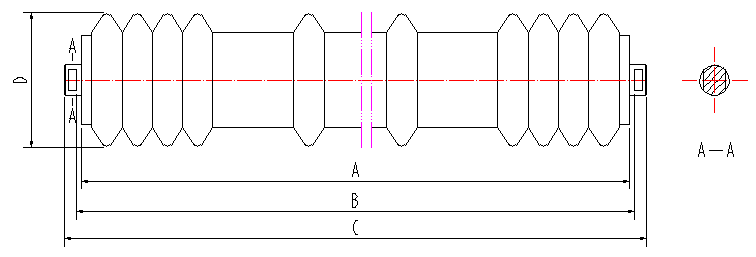 Afrikaans
Afrikaans  Albanian
Albanian  Amharic
Amharic  Arabic
Arabic  Armenian
Armenian  Azerbaijani
Azerbaijani  Basque
Basque  Belarusian
Belarusian  Bengali
Bengali  Bosnian
Bosnian  Bulgarian
Bulgarian  Catalan
Catalan  Cebuano
Cebuano  Corsican
Corsican  Croatian
Croatian  Czech
Czech  Danish
Danish  Dutch
Dutch  English
English  Esperanto
Esperanto  Estonian
Estonian  Finnish
Finnish  French
French  Frisian
Frisian  Galician
Galician  Georgian
Georgian  German
German  Greek
Greek  Gujarati
Gujarati  Haitian Creole
Haitian Creole  hausa
hausa  hawaiian
hawaiian  Hebrew
Hebrew  Hindi
Hindi  Miao
Miao  Hungarian
Hungarian  Icelandic
Icelandic  igbo
igbo  Indonesian
Indonesian  irish
irish  Italian
Italian  Japanese
Japanese  Javanese
Javanese  Kannada
Kannada  kazakh
kazakh  Khmer
Khmer  Rwandese
Rwandese  Korean
Korean  Kurdish
Kurdish  Kyrgyz
Kyrgyz  Lao
Lao  Latin
Latin  Latvian
Latvian  Lithuanian
Lithuanian  Luxembourgish
Luxembourgish  Macedonian
Macedonian  Malgashi
Malgashi  Malay
Malay  Malayalam
Malayalam  Maltese
Maltese  Maori
Maori  Marathi
Marathi  Mongolian
Mongolian  Myanmar
Myanmar  Nepali
Nepali  Norwegian
Norwegian  Norwegian
Norwegian  Occitan
Occitan  Pashto
Pashto  Persian
Persian  Polish
Polish  Portuguese
Portuguese  Punjabi
Punjabi  Romanian
Romanian  Russian
Russian  Samoan
Samoan  Scottish Gaelic
Scottish Gaelic  Serbian
Serbian  Sesotho
Sesotho  Shona
Shona  Sindhi
Sindhi  Sinhala
Sinhala  Slovak
Slovak  Slovenian
Slovenian  Somali
Somali  Spanish
Spanish  Sundanese
Sundanese  Swahili
Swahili  Swedish
Swedish  Tagalog
Tagalog  Tajik
Tajik  Tamil
Tamil  Tatar
Tatar  Telugu
Telugu  Thai
Thai  Turkish
Turkish  Turkmen
Turkmen  Ukrainian
Ukrainian  Urdu
Urdu  Uighur
Uighur  Uzbek
Uzbek  Vietnamese
Vietnamese  Welsh
Welsh  Bantu
Bantu  Yiddish
Yiddish  Yoruba
Yoruba  Zulu
Zulu Conveyor Pulley Selection Guide for Efficient Material Handling Solutions
Understanding Conveyor Pulley Catalogues A Comprehensive Guide
Conveyor systems are essential components in various industries, facilitating the efficient movement of materials and products. At the heart of these systems is the conveyor pulley, a crucial part that plays a significant role in overall performance and reliability. This article delves into the details of conveyor pulley catalogues, examining their importance, types, specifications, and how to select the right pulley for your needs.
What is a Conveyor Pulley?
A conveyor pulley is a mechanical device used to support and drive conveyor belts. They are typically positioned at either end of the conveyor system; however, they can also be found at intermediate positions to aid in the belt’s motion and direction. The primary types of pulleys include drive pulleys, return pulleys, and take-up pulleys, each serving a unique role in the operation of the conveyor system.
Importance of Conveyor Pulley Catalogues
Conveyor pulley catalogues are essential resources for engineers, maintenance personnel, and equipment purchasers. They provide detailed information on various pulleys, including their specifications, dimensions, load capacities, materials, and recommended applications. A well-structured catalogue can significantly simplify the selection process, ensuring that users can find the right pulleys to meet their operational requirements.
Key Components of a Conveyor Pulley Catalogue
1. Type of Pulleys Catalogues typically categorize pulleys based on their type, such as drive pulleys, tail pulleys, and snub pulleys. Each category features different design characteristics that suit specific applications.
2. Specifications A comprehensive catalogue will include technical specifications for each pulley, such as diameter, width, and belt capacity. Understanding these specifications is vital for ensuring that the selected pulley can handle the expected load and operate efficiently.
3. Material and Construction Pulleys are constructed from various materials, such as steel, aluminum, and composite materials. Catalogues will outline the advantages of each material, especially in terms of durability, weight, and corrosion resistance. Knowing the construction details helps in selecting pulleys that align with the environmental conditions of the operation.
4. Load Capacity Each pulley type has a maximum load capacity, which must be adhered to in order to maintain system integrity and safety. Detailed load ratings will usually be provided in the catalogue, allowing users to match their operational needs with the right pulleys.
conveyor pulley catalogue

5. Design Features Many catalogues highlight specific design elements, such as grooved surfaces for better belt traction, bearing types for ease of maintenance, and any additional features that enhance performance under particular conditions.
6. Applications Understanding the recommended applications for each pulley type is crucial for optimal performance. Catalogues often provide guidance on the best uses for each pulley, effectively linking performance criteria with applicable industries.
Selecting the Right Conveyor Pulley
Choosing the right conveyor pulley is essential for maximizing the efficiency and lifespan of a conveyor system. Here are some steps to consider
1. Identify System Requirements Assess the specific demands of your conveyor system, including the type of materials being transported, the length of the conveyor and the incline or decline of the system.
2. Consult the Catalogue Utilize the conveyor pulley catalogue to compare various options, focusing on specifications that align with your identified requirements.
3. Seek Expert Advice If uncertain, consider consulting with manufacturers or industry experts who can provide insights based on their experience and knowledge.
4. Evaluate Cost vs. Performance It’s important to balance cost with performance outcomes. Selecting the cheapest option may lead to increased maintenance costs or failures in the long run.
5. Order Samples If possible, it’s advisable to order samples or small quantities of pulleys for trial runs before committing to a larger purchase.
Conclusion
Conveyor pulley catalogues serve as invaluable tools for anyone involved in the design, maintenance, or procurement of conveyor systems. They offer critical information that can guide users in selecting the appropriate equipment for superlative performance and efficiency. By understanding the various components, specifications, and available options, you can make informed decisions that ultimately enhance your conveyor operations. Whether you are working in manufacturing, logistics, or any sector reliant on material handling, leveraging the insights from these catalogues can lead to substantial improvements in system reliability and productivity.
-
Revolutionizing Conveyor Reliability with Advanced Rubber Lagging PulleysNewsJul.22,2025
-
Powering Precision and Durability with Expert Manufacturers of Conveyor ComponentsNewsJul.22,2025
-
Optimizing Conveyor Systems with Advanced Conveyor AccessoriesNewsJul.22,2025
-
Maximize Conveyor Efficiency with Quality Conveyor Idler PulleysNewsJul.22,2025
-
Future-Proof Your Conveyor System with High-Performance Polyurethane RollerNewsJul.22,2025
-
Driving Efficiency Forward with Quality Idlers and RollersNewsJul.22,2025





























